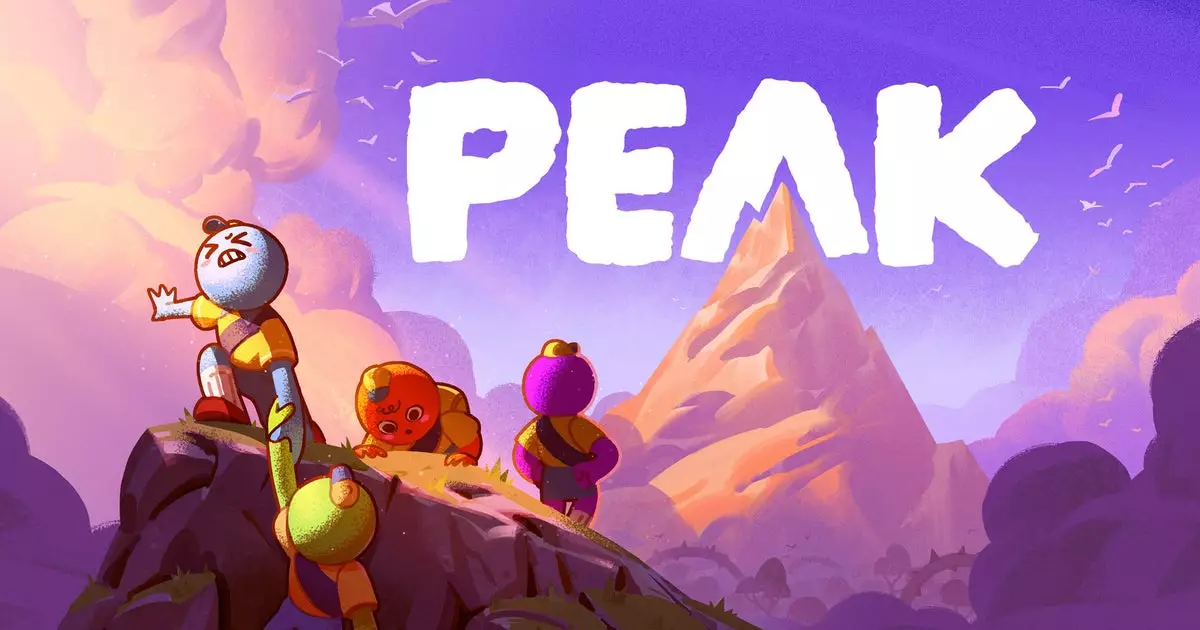The world of video game development is often perceived as an elite club, shrouded in complex algorithms and endless iterations. Yet, the emergence of “Peak,” a co-op video game centered on the whimsical yet chaotic experience of mountain climbing with friends, proves that the genesis of creativity can stem from unexpected sentiments, notably jealousy. It’s a sentiment that, while perhaps conventionally viewed as negative, served as the ignition for Aggro Crab developers, pushing them into action during a collaborative game jam with Content Warning’s creators, Landfall. The notion that competition can catalyze innovation is one that many industries grapple with, but few succeed in translating it into success as effectively as in gaming.
Nick Kaman, head of Aggro Crab, humorously mused about the role jealousy played in the inception of Peak. The developers found themselves invigorated by the realization that Landfall had successfully created and launched a game during a similar one-month development sprint. This competitive spark ignited within them as they prepared to release their own, more traditional, project—the three-year-long Another Crab’s Treasure. The juxtaposition of their arduous journey against the agile success of Landfall’s game turned the perception of what was possible in game design on its head. This rivalry forged a path that led them to seize an opportunity that they would otherwise have let slip by.
The Unconventional Process
A month in Korea sounded like a dream deal for game creators. In a country recognized for its vibrant culture and technological innovation, the development team locked themselves away in an Airbnb to transform their ideas into playable experiences. The first order of business? Heading straight to IKEA to gather the essentials: chairs and desks. This move starkly illustrates the commitment to establishing a functional workspace, one that allowed creativity and collaboration to flow seamlessly. The endearing act of donating these essentials to the local indie scene post-jam further emphasizes a camaraderie unique in the gaming community—a willingness to foster future talent and support fellow creators.
The original concept for Peak, conceived in a hot tub in Sweden, possessed an entirely different flavor, leaning towards an open-world survival game. However, inspiration struck, and the narrative shifted to a band of lost scouts on an island, teetering between slapstick humor and survival. This adaptation process not only reflects the team’s flexibility but also underscores the importance of collective brainstorming in the creative sphere. While brainstorming sessions often lead teams down paths of immense scope, the clarity and focus on a specific theme in Peak kept the development team aligned and energized.
The Intensity of Collaboration
Working under the intense pressure of a month-long deadline proved both challenging and exhilarating. Kaman and his fellow developers dove deep into the grind, a necessity born from the competitive energy they had harnessed. Each meal spawned more discussions about Peak, reinforcing the idea that gaming development is rarely a solitary venture. Instead, it’s a communal endeavor driven by shared enthusiasm and collaborative problem-solving. This sense of urgency, coupled with relentless creativity, most often yields fruitful results that resonate with players.
Commercial success, as Peak has demonstrated by selling impressively well, can sometimes be misconstrued as a direct outcome of such rapid iterations. However, it merits caution: claiming that a thriving game can emerge solely from a swift development schedule is a misconception that could mislead aspiring developers. Both Aggro Crab and Landfall entered this venture with substantial experience, clearly illustrating that while timing and execution are paramount, the foundation laid by previous projects greatly informs and enriches new endeavors.
A Futuristic Perspective on Game Design
The journey of Peak sheds light on a transformational trend in the gaming industry—lessons learned from both failure and success shaping future projects. As creators experiment with unconventional formats and development timelines, we see a dismantling of traditional frameworks. The success of Peak, born from feelings of rivalry and disappointment in the lengthy gamedev process, signifies games as evolving dialogues amongst creators, rather than mere products crafted in isolation.
In revisiting the roots of creativity, this evolution signals not just a shift in design methodologies, but a reimagined relationship between developers and their audience. Peak’s triumph is not only a testament to the power of collaboration but also a reminder that the journey of creation is as crucial as the final product itself. The industry now stands at a delicious crossroads of experimentation and innovation—a space where creativity is borne not only of inspiration but the sometimes complicated web of human emotion.

